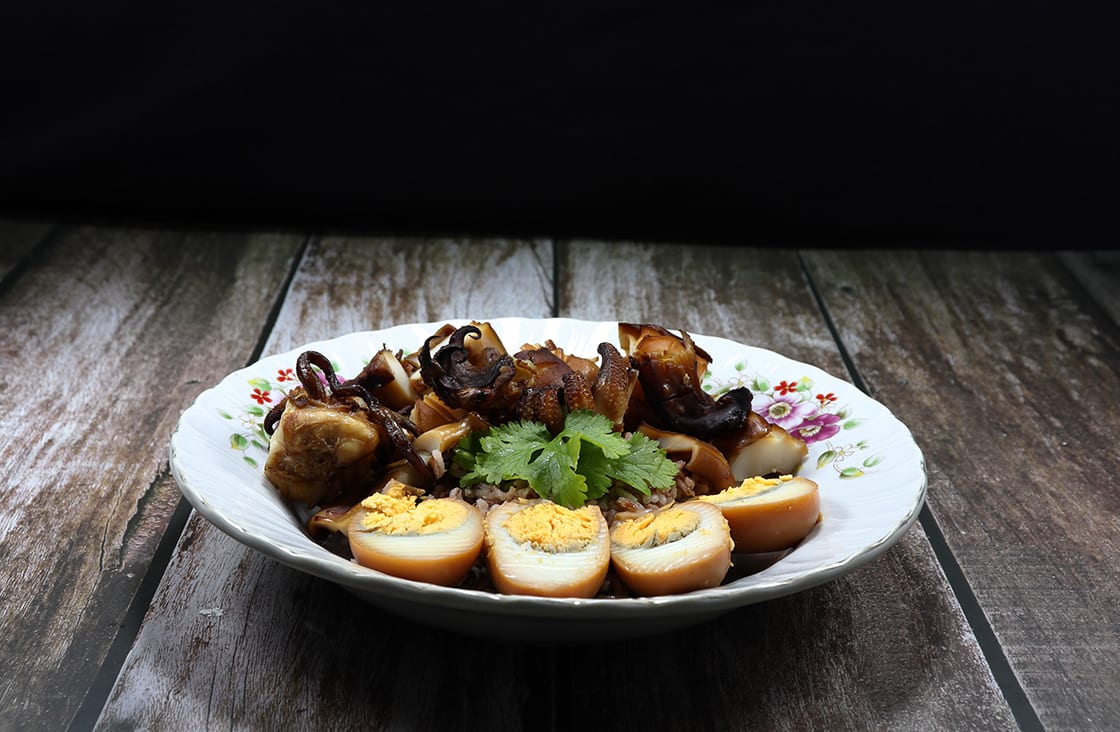
The magical Halong Bay is on every list of top things to do in Southeast Asia. Blessed with spellbinding scenery with islets and grottos, Halong Bay is also famous for its many species of shellfish. Here, you can enjoy a wide variety of super-fresh seafood, which is flavored with delicate bouquets of herbs and served at the many seafood restaurants as well as street food stalls and night markets in Halong City and the Bai Chay area.
On your vacation in Vietnam, make sure to plan a trip or a cruise in Halong Bay, and don’t skip the local food stalls and markets! Read on for details of the best traditional Halong Bay food – a variation on the traditional Vietnamese cuisine.
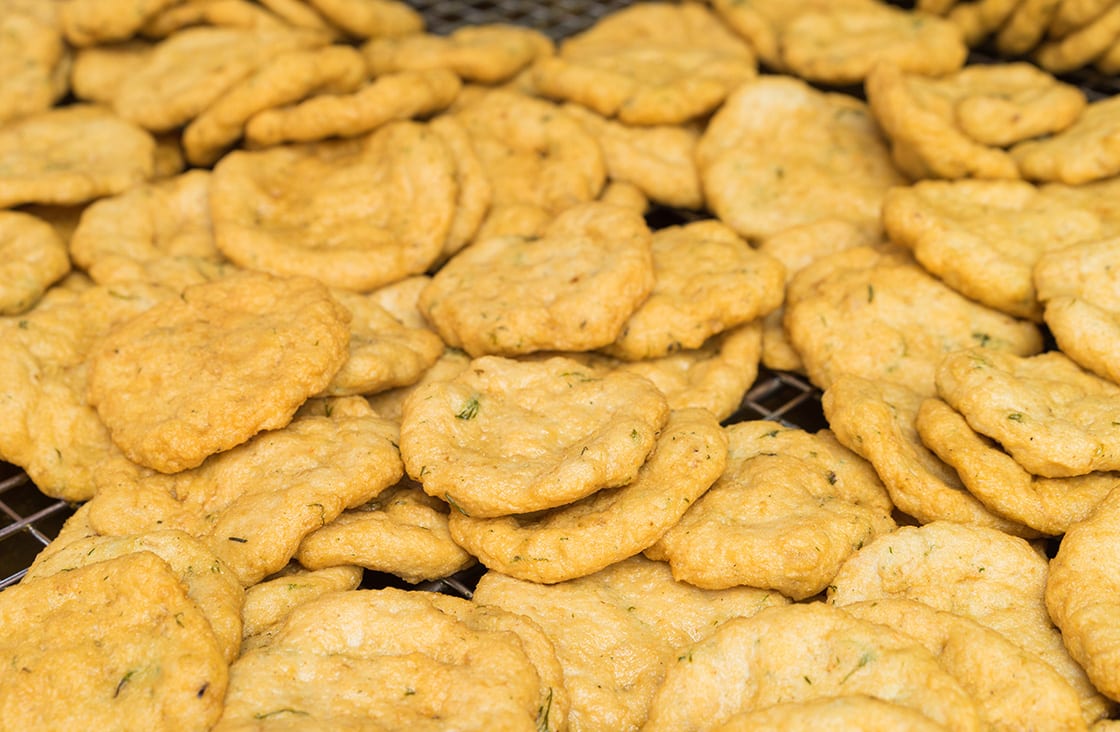
Also known as squid sausage or squid cake, Cha Muc is considered to be one of the top regional specialties of Vietnam. It is certainly the most popular dish in Halong Bay and the Quang Ninh province. In fact, the local fishermen maintain that the squid for cha muc must come exclusively from Halong Bay. The secret behind the juicy flavor of this dish is the practice of patiently grinding the squid meat by hand, which is then blended with secret spices that only the chefs know, molded into round pieces and fried until golden brown. The delectable aroma and crunchy texture goes well with steamed or sticky rice with fish sauce, or banh cuon − steamed rice rolls.
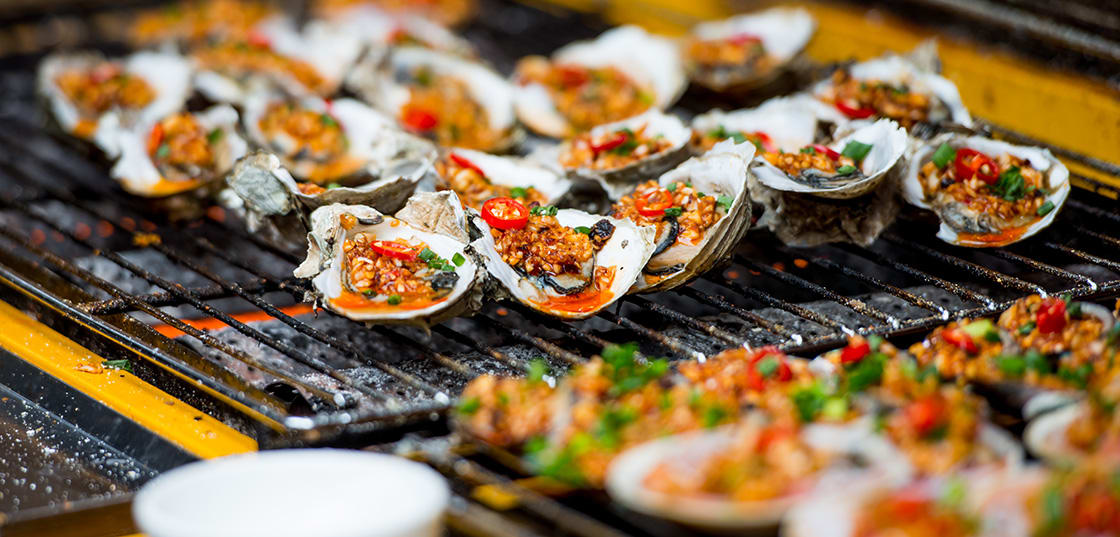
In Halong Bay, fresh oysters are caught daily, washed and grilled over charcoal and then seasoned with salt, pepper and lemon or grilled onions. Sometimes they’re served raw with a slice of lemon. According to the locals, the tastiest oysters here are the ones living in seaside quagmire.
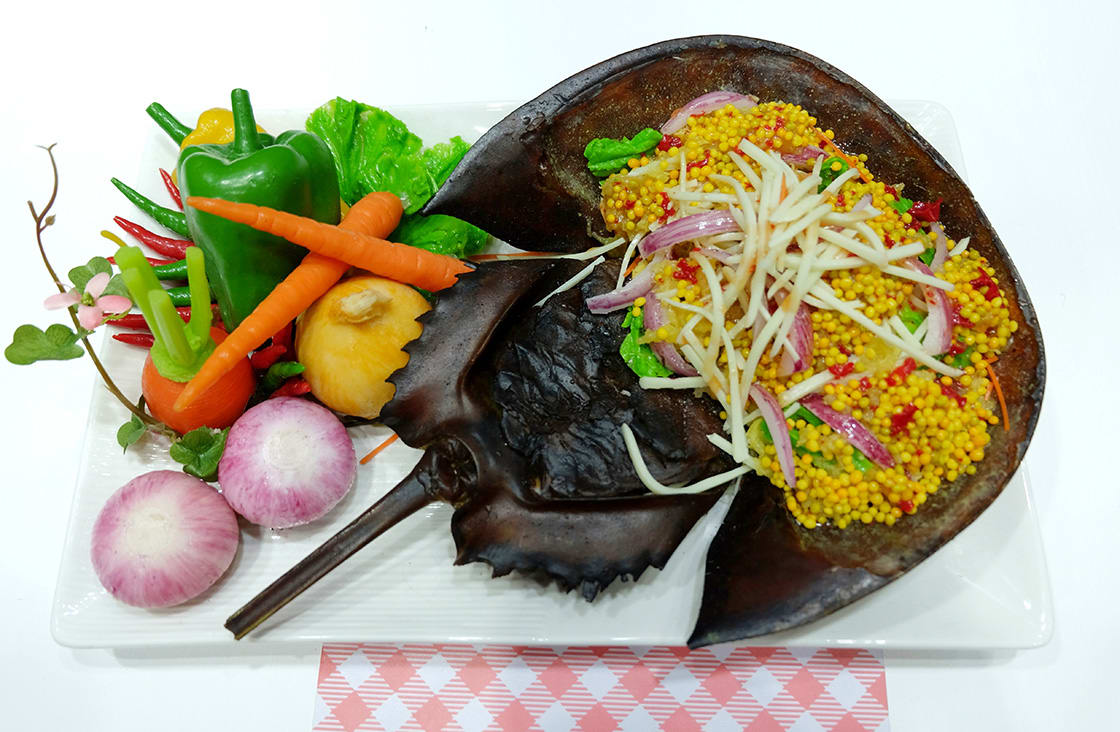
Horseshoe crabs, known as Sam, live in shallow ocean water, so Halong Bay is the perfect habitat for them. The crabmeat can be prepared in a variety of ways and served as crab salad, sweet and sour crab, sautéed crab with lemongrass and pepper, steamed crab, fried crab with glass noodles, pudding crab, fried crab cartilage, and more.
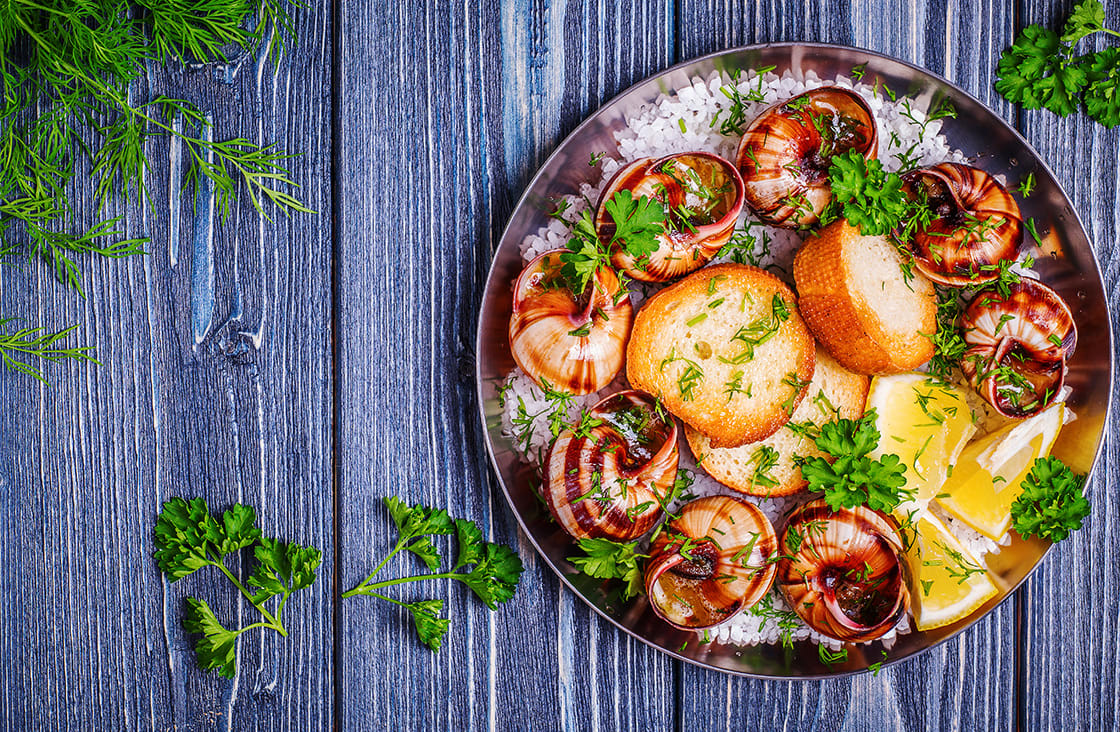
Halong Bay is home to many types of sea snail; each with its own different flavor. They are usually served stir-fried with various sauces including chili sauce, soya sauce, fish-sauce, ginger, pepper and lemongrass.

Ngan is a special type of bivalve mollusk, bigger than a clam with a white shell and a big tentacle, found in mangrove estuaries. If you visit Halong, you’ll encounter ngan grilled, steamed, as a porridge, or stir-fried with vegetables or noodles. Halong residents also use the clams to make a special drink, a mixture of Vietnamese rice wine and ngan blood. The wine is a beautiful red color and has a totally unique flavor.
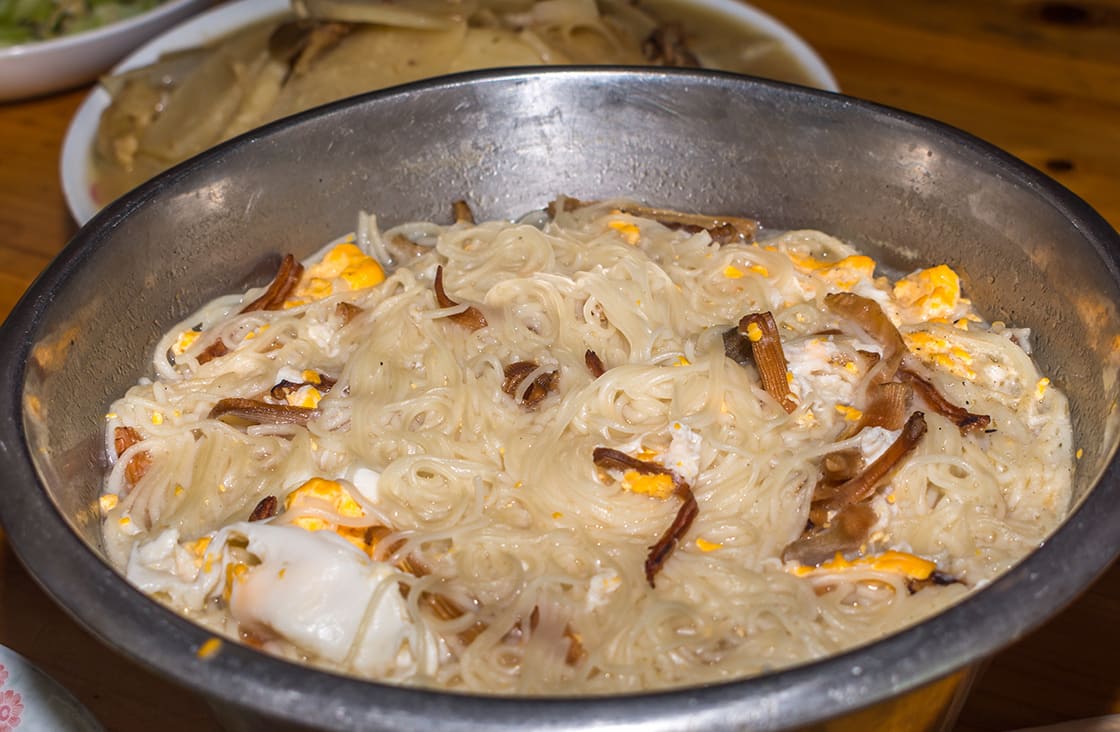
This seafood dish is one of the most expensive in Halong Bay and is almost exclusively served in Quan Lan Island. Sung is a type of marine worm that lives only in clean water, under the sand on the seafloor. The local people in Halong cook Sa Sung in different ways: it can be fried with garlic or pineapple, grilled with chili salt, roasted and served with chili or lettuce, or eaten raw with mustard. Some people cook sa sung with noodle soup or vermicelli. Others bake them with pepper and salt. Dried sa sung is often added to hotpot dishes to increase the sweetness of the broth. It can be hard to find, which means it is an expensive seafood that was formerly reserved for only the highest echelons of Vietnamese society.
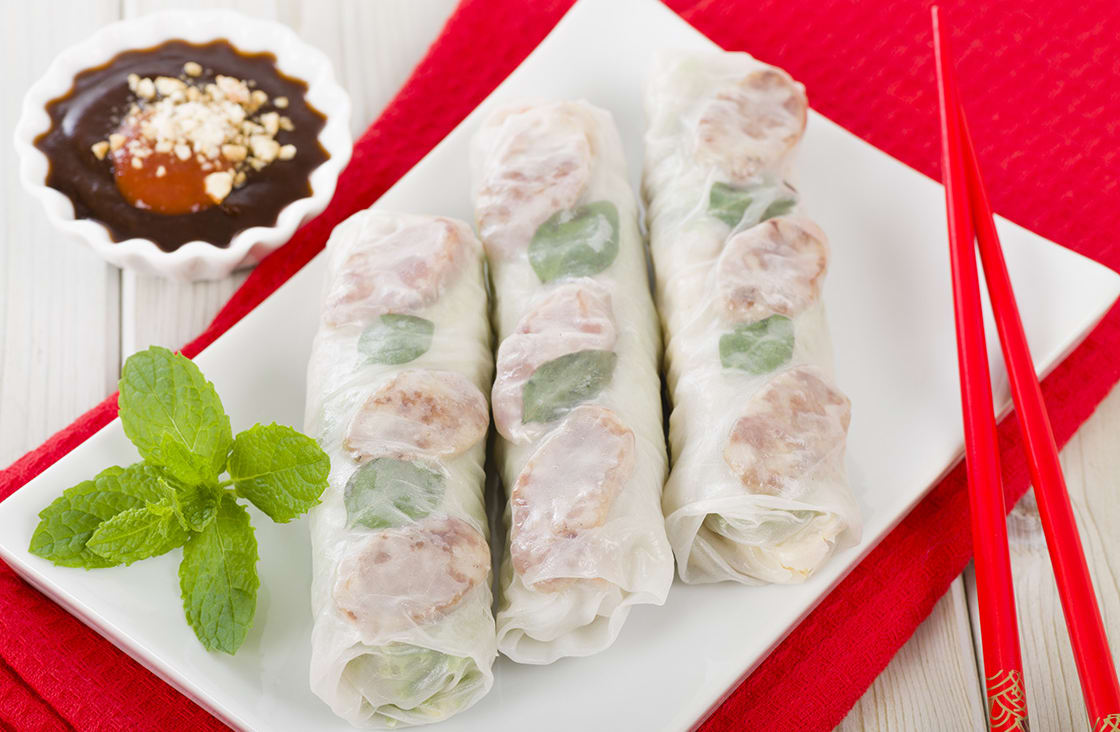
This traditional Vietnamese cake is made from rice flour. Cold rice is added to the dough, so that the cake is coated with a fluffy but smooth texture. The cake is then steamed into a thick layer, which is then rolled without filling and sliced into pieces. It is usually dipped in a special sauce and served with a piece of caramelized pork. The cake originated in the town of Tien Yen, but is popular in Halong.
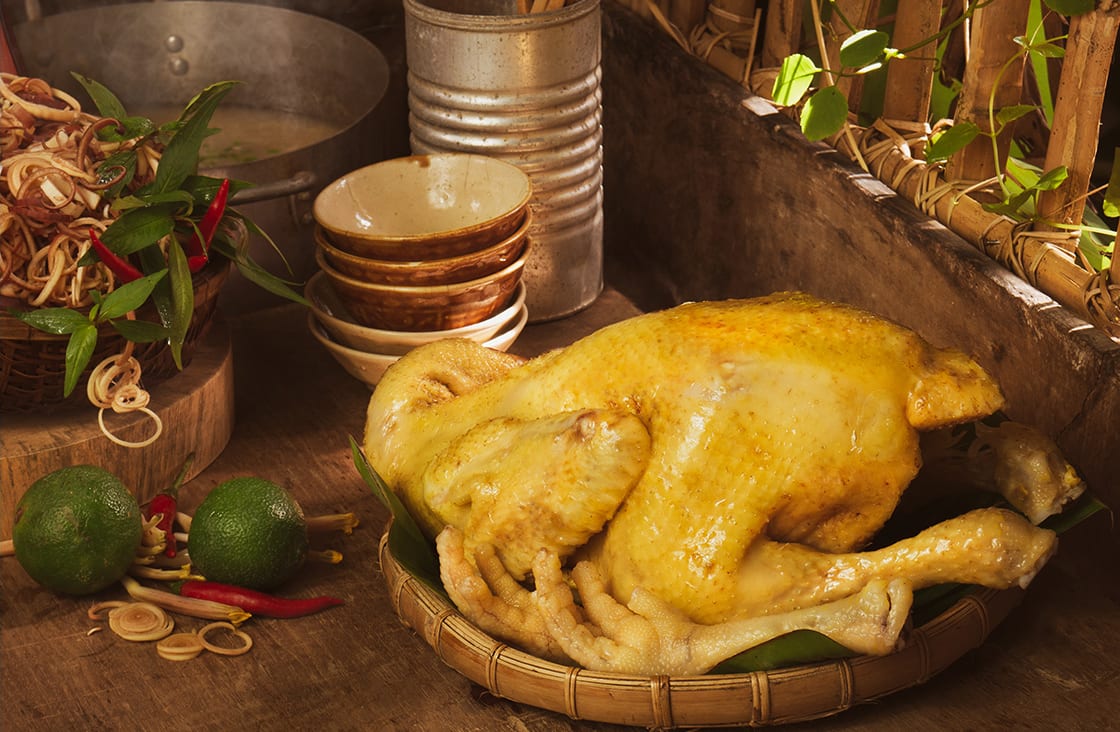
This dish can be found in most restaurants in Quang Ninh and especially in Halong Bay. It is not only prized for the succulent meat but also for the added ingredients including fresh ginger, fish sauce, and Coca-Cola.
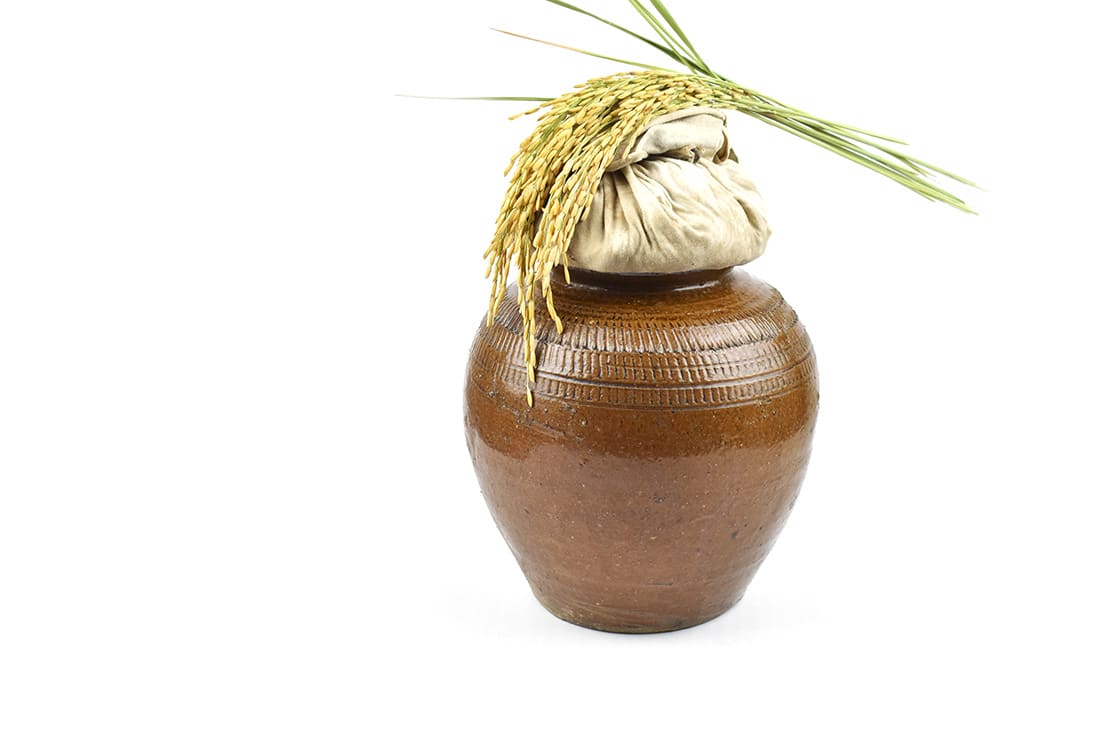
This Halong specialty is made from sticky rice fermented with leaves taken from the Hoanh Bo forest, creating a sweet and sour flavor and a characteristic scent. The wine is a good accompaniment for seafood.
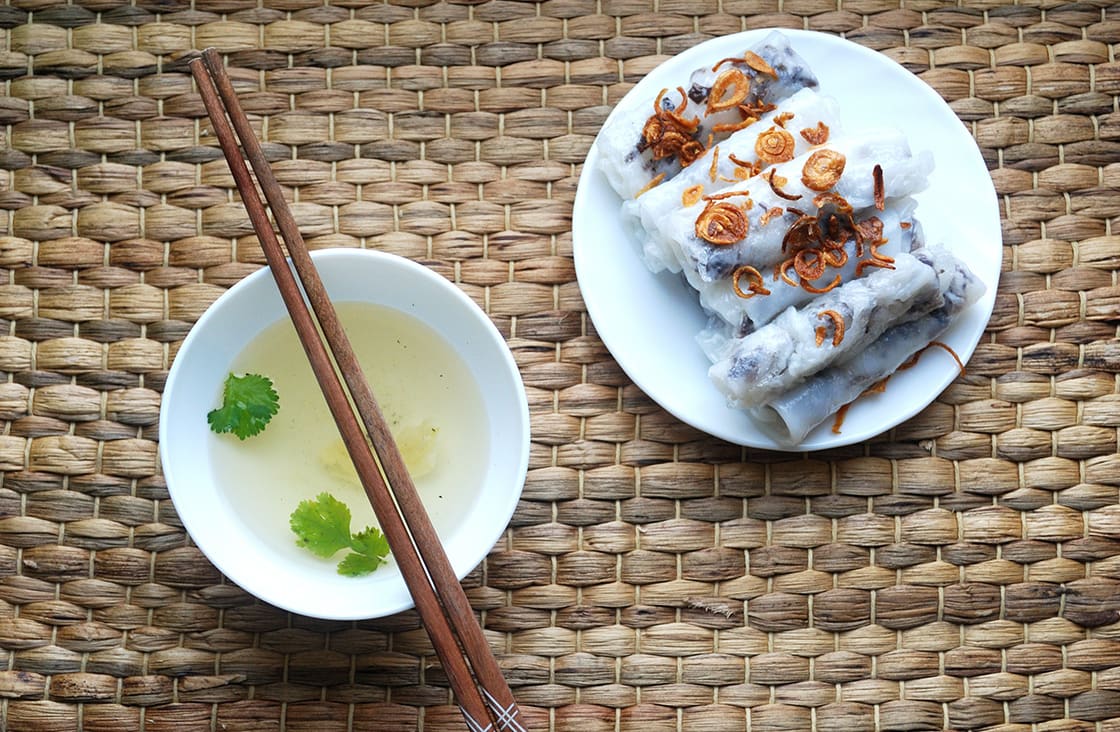
Banh Cuon is made from steamed fermented rice batter stuffed with a combination of seasoned ground pork, jicama, minced shallots, and minced wood ear mushroom. It gets a sprinkle of crispy fried shallots and a glaze of scallion oil before being served on a bed of thinly sliced cucumbers, blanched bean sprouts, chopped lettuce, Vietnamese herbs, and cha lua (Vietnamese pork sausage). The rolls are often dipped in a local fish sauce called nuoc cham. For added flavor, a drop of ca cuong, which is the essence of a giant water bug, is mixed to the fish sauce, although this particular ingredient is rare and quite expensive.
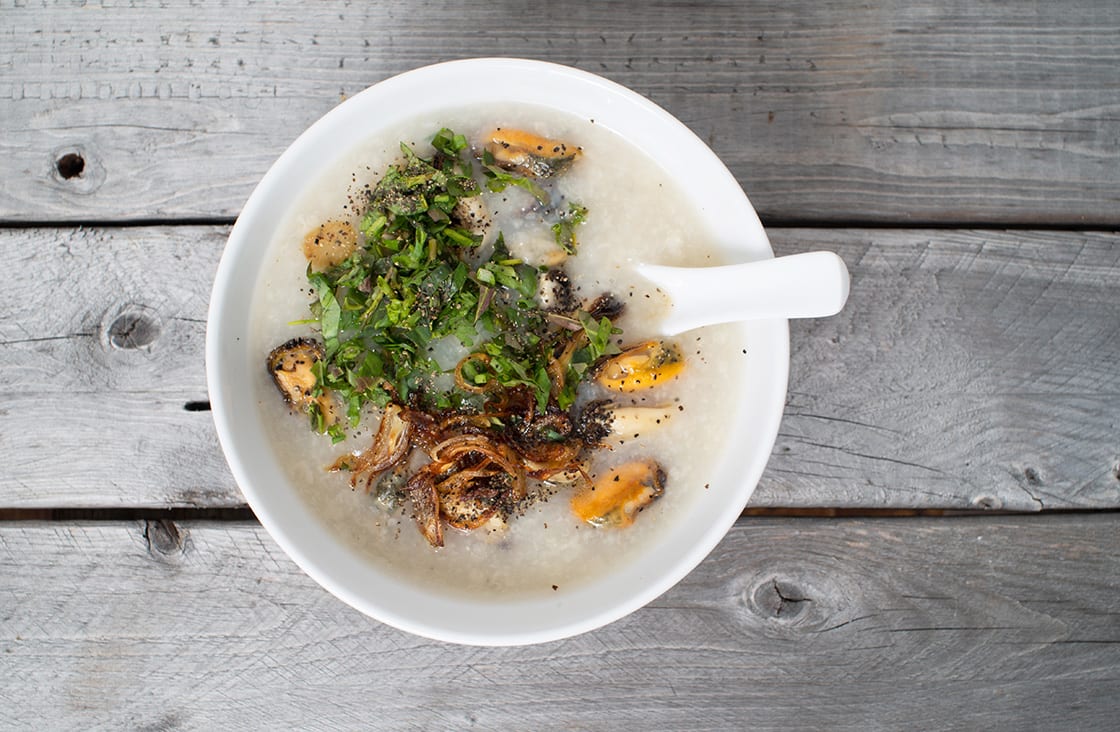
Cháo Hà, or Acorn Barnacle Porridge, is prepared by marinating the fresh acorn barnacle with pepper and fish sauce before stir-frying it with onion and adding it to a cooked rice porridge, garnished with onion, pepper, and coriander.
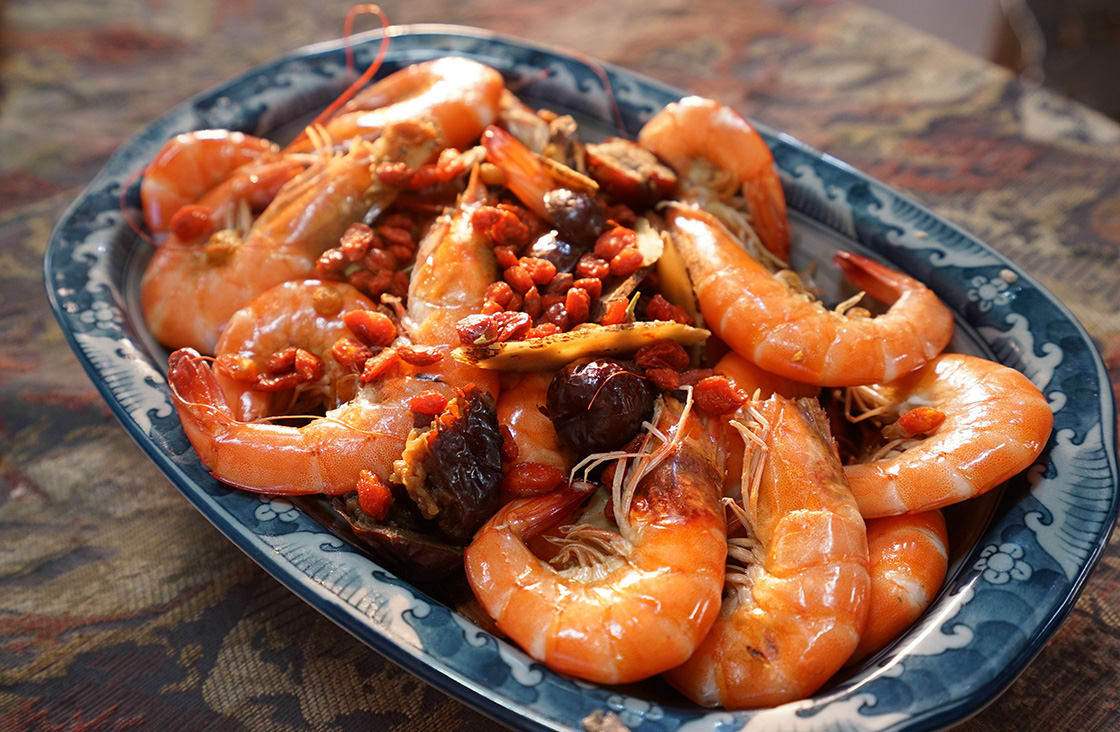
Fresh prawns and lobster are two of the greatest joys of Halong Bay. Straight from the sea and onto your plate, they are best when steamed with lemongrass, beer or vodka. This cooking method gets rid of the fishy smell.
While Rainforest Cruises aim to provide accurate and up-to-date information, we make no representations as to the accuracy or completeness of any information herein or found by following any link on this site. Rainforest Cruises cannot and will not accept responsibility for any omissions or inaccuracies, or for any consequences arising therefrom, including any losses, injuries, or damages resulting from the display or use of this information.




